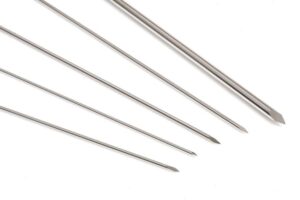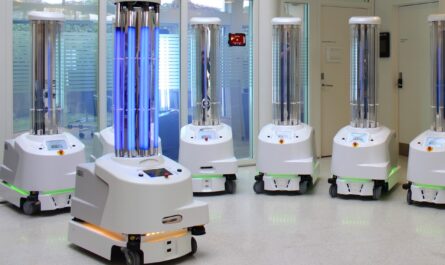
Kirschner wires, also known as K-wires, are thin surgical stainless steel wires used to stabilize bone fractures or hold together bones, grafts or other implants during the healing process. They are temporary implants that provide stabilization until the bone has adequately healed. K-wires range from 1 to 3 millimeters in diameter and come in various lengths depending on the application and size of the bone being treated.
Materials and Mechanism of Stabilization
Kirschner wires are made from surgical grade stainless steel for its biocompatibility, strength and corrosion resistance. The thin cylindrical shape allows for minimally invasive insertion through small incisions or percutaneous insertion using a drill guide. Multiple wire configurations such as figure-of-eight or parallel placements can be used for fracture stabilization.
The wires work by providing rigidity to the fractured bone sections and preventing movement until new callus tissue forms to heal the fracture. They are not designed to bear full weight or withstand high loads, but simply to immobilize the bone during healing. Tension band wiring is a common configuration that uses the wire’s tensile strength to counter forces along the long axis of the bone.
Applications in Upper Extremity Fractures
Fractures of bones in the hand, wrist, arm and shoulder are common applications for K-wire fixation. Wires can be inserted percutaneously or during open reduction and internal fixation procedures to stabilize:
– Phalangeal and metacarpal bone fractures
– Carpal bone fractures such as scaphoid fractures
– Distal radius fractures including Colles’ fractures
– Humeral shaft fractures
For hand and finger fractures, multiple wire placements provide immobilization to all fracture planes until soft tissue healing is complete. They allow for early motion of adjacent joints. In wrist fractures, a single wire or figure-of-eight configuration counters shearing and torsional forces.
Application in Lower Extremity Fractures
Given their thin diameter and removable nature, K-wires also see frequent use in orthopedic trauma of the lower extremities, such as:
– Patella fractures requiring positioning and fixation
– Fifth metatarsal (Jones) fractures requiring stabilization of fracture reduction
– Calcaneal fractures to reduce intra-articular fragments
– Malunited fracture corrections by osteotomy and refixation
– Temporary fixation of bone grafts or osteotomies in hip and knee surgeries
Along with plates and screws, K-wires are used as an adjunct or alternative in fracture treatment and reconstruction surgeries of the foot, ankle, leg and hip joints. Their particular role depends on the fracture pattern and stability required.
Post-Operative Care and Complications
Most K-wire fixation procedures follow a period of immobilization in a cast, splint or rigid dressing until sufficient bone healing occurs. K-wires are eventually removed in a minor procedure once full recovery is achieved. Removal often occurs between 4-8 weeks but may be longer if bone healing is delayed.
Common complications of K-wire fixation include infection, migration of wires, breakage, bent wires and failed fracture reduction. Infection risk is low given the minor soft tissue dissection, but implants can become embedded in tissues over time. Close post-operative monitoring is required to detect early signs of these issues. With proper surgical technique and immobilization, complications are rare in properly selected patients.
Conclusion
As a mainstay in orthopedic trauma and reconstruction surgery, Kirschner wires serve an invaluable role through their small size, biocompatibility and ability to provide minimally invasive fracture stabilization and fixation of bone grafts. With over a century of clinical use since their introduction in 1918, K-wires continue enabling optimal bone healing and early return of function for many upper and lower extremity fractures and post-operative cases. Their unique mechanical properties make Kirschner wires a staple implant worthy of further development and clinical applications.
*Note:
1. Source: Coherent Market Insights, Public sources, Desk research
2. We have leveraged AI tools to mine information and compile it



